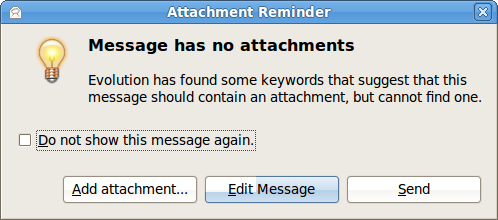
 Let me start out with a confession. I am a lousy dental patient. As I read Dr. Bahri’s book, however, I began to realize why I am a lousy dental patient. The thing I dislike about the process is that, unless everything is 100% perfect during a checkup, I invariably have to make another appointment, sometimes more than one, to get the follow-up work complete. In other words, I am exactly the kind of patient that Dr. Bahri is targeting with his practice.
Let me start out with a confession. I am a lousy dental patient. As I read Dr. Bahri’s book, however, I began to realize why I am a lousy dental patient. The thing I dislike about the process is that, unless everything is 100% perfect during a checkup, I invariably have to make another appointment, sometimes more than one, to get the follow-up work complete. In other words, I am exactly the kind of patient that Dr. Bahri is targeting with his practice.
This book has three parts, each a small book in itself.
In Part 1, Dr. Bahri tells the story of his experience taking his clinic from yet-another-dentist’s-office to an efficient operation with 30%+ more capacity than similar offices, and single-visit throughput for most of his patients.
His initial insight is captured on page 7 where he tells the story of a patient who was genuinely short on time.
We found that her [college student] daughter needed seven onlays and two composite fillings. Because she was short on time, we had to finish the entire treatment in one visit. It took us from 9:00 am to 1:00pm, a four hour visit!
I wondered: Why couldn’t we do this for all of our patients? Weren’t most of our patients short on time?
And, with the realization that this kind of performance is possible, if wasteful, Dr. Bahri starts down the path of figuring how how to do it without the waste.
Another key mental shift was the realization that the patient has more than clinical and medical needs. The patient is buying a service, just like any other, and providing for the non-medical needs are just as important. This means respecting the patient’s time, and delivering the care in a way that aligns with the way the patient wants it.
It was no longer about optimizing the practice, but about optimizing the patient’s experience. Even if the patient didn’t want or need the treatment in one day (some might prefer it broken up over a number of shorter visits), by developing the capability to do so, Dr. Bahri created a flexible system that can respond to the patient’s wishes, no matter what they are.
A little further on, Dr. Bahri shares another crucial insight:
I would like to say that I had a well-designed master plan to reach one-patient flow, but I didn’t. Instead, the story of our lean transformation felt much more like a long trek through a mountain range. Our learning journey was not a straight line.
Steven Spear is pretty clear on this point. He repeatedly points out that the “perfect process” cannot be designed. Rather, it must be discovered, and this is exactly Dr. Bahri’s experience. His journey of discovery dealt with one problem at a time, as it was encountered, rather than trying to solve all of the problems at once. Flow was his “True North” but there wasn’t a GPS. Rather, he recounts a series of obstacles that revealed themselves only as the previous one had been cleared.
But more than simply describing what he did, Dr. Bahri describes what he learned along the way.
The learning component is what distinguishes Dr. Bahri’s journey from most technical-only implementations. He personally, and more importantly, publically set out to learn how to understand the problems, experiment with countermeasures, and apply them. In doing so, I believe Dr. Bahri exhibited that rare commodity in leadership today – humility. Rather than being the guy with the answers, he was the one with the questions. He taught by being a student.
The second section is only a few pages, but it directly addresses the leadership issues. One of the key points is his shift from directive to supportive leadership.
He describes another crucial insight on page 41:
What brings us together and makes us most efficient is clearly seeing the current problems that stop us from achieving and maintaining one patient flow. Once problems are clearly communicated among staff, the desire to eliminate them incites people to collectively take corrective action.
A key point here is that the exact mechanism for doing this is not so important as making sure there is one. One thing that I see common in every organization that has implemented true continuous improvement is some means of identifying and collectively managing problems as barriers to flow. This is much more than just hoping people will “see waste and work to eliminate it.” The process, like any other collective process, must be led and managed.
In the third section, Dr. Bahri breaks down the principles he discovered along the way, organized around the themes of purpose, process and people. In talking about taking a systems view, he also cites many references that other, more narrow minded people, might believe are contradictory, when in fact, they are not.
In particular, he describes Peter Senge’s reference to “The Beer Game” in The Fifth Discipline, and relates it back to his dental practice.
To improve the decision-making process it becomes critical to eliminate delays in the feedback processes that occur.
How does this apply to dentistry? Simple. If we find a cavity while examining a mouth, we have the information about that tooth fresh in our mind. Therefore, we can treat the tooth with minimal risk of making mistakes. On the contrary, if we delay the treatment for a few months, we might forget some of the details, even after writing good notes in the patient’s chart.
If this happens in a dental office of a dozen people, imagine a large hospital or other complex care delivery environment. Each time a patient’s care is transferred from one stage to another, some information is invariably lost. Other information becomes obsolete. The next stage must either re-acquire this information through redundant tests and examination, or (worse) act without it, sometimes at risk to the patient. Either option introduces delays, expense, and chaos into the system.
So – Perhaps deliberately, perhaps by happenstance, the result of all of this was that Dr. Bahri created a learning organization – one in which people continuously test and challenge their assumptions, and actively seek out more understanding of the system itself.
There are two things I really like about this book.
First, Dr. Bahri’s story begins with the customer – his patients – and he challenges himself, and his staff, to deliver all of the required procedures, planned or discovered, during a single visit. This idea turns the whole concept of tightly scheduling appointments centered on the care providers on its ear, and focuses instead on the care receivers. In short, he wants to deliver continuous flow of care to the patient, without interruption, until it is complete.
From that simple decision – to deliver a continuous flow of care to the patient, rather than an hour here and an hour there, with days of waiting in between – grows an organizational culture focused on driving toward this ideal condition.
The second is that he emphasizes the role of the leader as change agent. While it is theoretically possible to “outsource” or delegate the role of change agent in your organization, if that is going to work, the change agent has to be seen as a a true agent, acting explicitly on behalf of the leader. Few managers are willing to back up their so-called “change agents” to that degree. This leaves the organization in an ambiguous state where “change agent” is expected to convince the people (and the leader) that the proposed changes are “good.” When the leader is the change agent, this ambiguity is removed, and things move forward.
Over the years, I have seen a few spectacular successes. The one thing they all have in common is a leader who is personally dedicated to his or her own learning, and is willing to learn publically – rather than being afraid of appearing ignorant. Dr. Sami Bahri, DDS is one of those leaders, and this book goes far beyond dentistry or medical topics.
In the end – is this book perfect? No, I would prefer increased emphasis and a bit sharper contrast in some areas. But any serious practitioner, in any field would do well to read this story. As the title suggests, it is much less about implementing in a medical or dental practice than it is about leadership in any change effort.
Ironically, some in manufacturing are likely to dismiss it as only being appropriate for a service delivery environment.
Follow-up: Mark Graban has a video podcast interview of Dr Bahri on his site.



